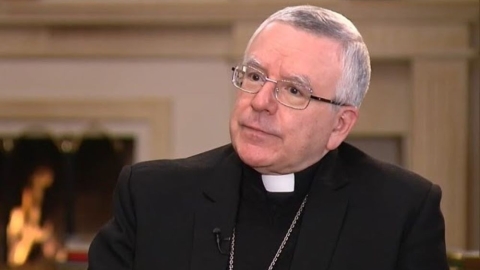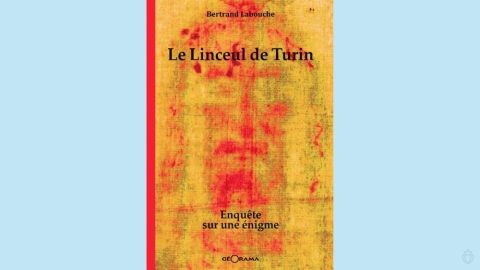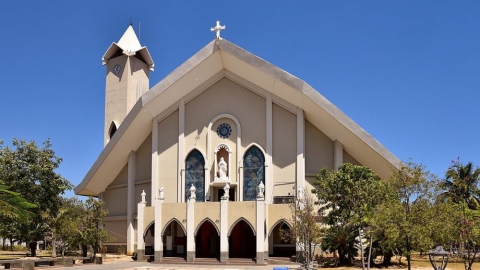Vatican Has Decided to Restore Galileo’s Reputation

A new edition of the Vatican’s documents concerning Galileo’s trial (1564-1642) will be released at the end of June 2009. This edition, with additions and revisions will be 550 pages long and numbers 1,300 footnotes by Bishop Sergio Pagano, Prefect of the Vatican Secret Archives. This document is about the trial of the native of Pisa which had been re-examined under the pontificate of John Paul II. In the Osservatore Romano of May 29, Bishop Pagano confided that at the time of his condemnation, “historical circumstances were not yet ripe enough to accept the scientific studies of the great scientist from Pisa.”
This publication is one among the many initiatives to which various institutions of the Holy See are taking part within the context of the International Year of Astronomy, organized by UNO for the 400th anniversary of the first great discoveries of modern astronomy. On this past January 29, during a press conference, Archbishop Gianfranco Ravasi, President of the Pontifical Council for Culture, had announced from the start that one of the major figures of the celebration of the centennial was Galileo, and specified that the Church intended to “honor one of her sons, a forerunner of genius. Time had come to reconsider the person of Galileo and Galileo’s Affair.”
However, the Vatican has given up its project of erecting a statue of Galileo in its gardens. “We had a patron for the project,” he explained, “but afterwards we thought it better to use the money to finance institutions of scientific and philosophical research, as it is already the case in Africa. Archbishop Ravasi, specified that “today, in a more serene atmosphere we can at last consider the person of Galileo and recognize in him the believer who, in the context of his age, tried to conciliate the results of his scientific research with the contents of the Christian faith. This is why Galileo Galilei deserves all our appreciation and gratitude.”
In a press release broadcasted by the news agency Zenit, the Vatican underlined that “there was a close link between the contemplation of a starry sky and religion.” For the Holy See, this year “means an important opportunity of delving deeper into the matter and of dialoguing.” Hence “various dicasteries of the Vatican (…) are at the source of events, initiatives and projects which all have as their object astronomy and the person of Galileo.”
After Vatican II’s criticism of “certain habits of mind, which are sometimes found too among Christians, which do not sufficiently attend to the rightful independence of science” (Gaudium et Spes, 36), in 1981, John Paul II had set up a commission charged to “seriously re-examine Galileo’s affair and to remove the obstacles that this case placed in the path to a serene confrontation between science and faith.” The commission had “the courage to acknowledge the errors made by Galileo’s judges, who, unable to disassociate Faith from a thousand-year old cosmology believed, unquestionably wrongly so, that the Copernican revolution, which besides was not yet definitively proved, was of such a nature as to weaken Catholic tradition, and that it was their duty to forbid that it be taught.”
Thus from May 26 to 30, 2009, a congress took place in Florence for a new historical, philosophical and theological reading of the works of the Tuscan astronomer. This congress organized the Stensen Institute of the Jesuits, with the support of the Pontifical Council for Culture, of the Vatican Academy of Science and Observatory, and gathered international experts in theology, history and philosophy. In November, the Pontifical University of the Lateran will organize an international congress: “From the birth of astrophysics to evolutive cosmology, science, philosophy and theology.” From October 15, 2009, until January 15, 2010, the Vatican Museums will display an exposition entitled Astrum 2009 and dedicate it to the historic patrimony of Italian and Vatican astronomy from Galileo until our age. It will be organized in collaboration with the Italian Institute of Astrophysics and the Observatory of the Vatican. The members of the astronomic Observatory of the Vatican will also take part in various international events.
By way of conclusion, Archbishop Ravasi announced that the Cultural Project of the Italian Church (website: www.disf.org Interdisciplinary Documentation on Religion and Science) would show particular interest in the Year of Astronomy by publishing documents, texts and lectures with the intention of “orientating and deepening in a Christian direction the debate between science and Faith.”
Must we really repent for the Galileo’s affair? Fr. Philippe Marcille, of the Society of St. Pius X, strove to bring an answer to this question which may come to mind on the occasion of the restoration in favor of Galileo who, from the 17th century had become a mythic personage symbolizing the victory of science over religious obscurantism. In a 60-page study under the title Exorciser le spectre de Galilée (To Exorcize Galileo’s Specter) published by the Sel de la terre in 2006, Fr. Marcille removes the veil from a little known character whose life led to a trial distorted by history.
(Sources: apic/imedia/VIS/Zenit)
The pope’s interest in astronomy dates back to 1578, when Gregory XIII (1572-1585) built in the Vatican the “Winds’ Tower”, an astronomic observatory destined to enable the calculations necessary to reform the calendar now called “Gregorian” in memory of the pope. The present Observatory of the Vatican was created in March 14, 1891 by Pope Leo XIII (1878-1903). Its objective was to promote astronomic sciences and prove that the Church was favorable to scientific progress. Since the beginning of the 20th century, the Observatory of the Vatican has been entrusted to the Society of Jesus.
Placed under the direction of the Governorate of the State of the Vatican City, the astronomic Observatory of the Vatican is an institute of scientific research. A dozen Jesuits work in Castel Gandolfo near Rome where they study and analyze the data, and in Tucson, (Arizona) in the United States, where observation has been taking place since 1981 because of the clearness of the sky. The offices, library and community of the Jesuits of the Observatory in Castel Gandolfo should shortly be transferred to a new location near the lake of Albano. The present observatory will still keep the old telescopes which will be used for limited observation.





